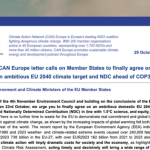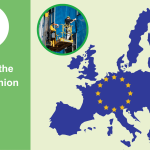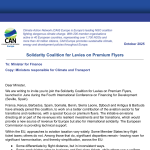The backbone of Europe’s energy transition; The final stand for EU’s Renewables Directive
- A 2030 Renewable Energy target lower than 45% does not reflect neither the energy price or climate crises
- Any attempts to allow low-carbon undermines the sole purpose of the directive; to promote the development of renewable energy across all sectors in the EU
Brussels, 27th March –
What is Happening: Wednesday, 29th March, will most likely see the conclusion of the Renewable Energy Directive (RED) revision under the ‘Fit for 55’ package, the European Green Deal and ‘REPowerEU’ plan. This is the most important file for promoting the development of renewable energy in the EU and is instrumental for Member States to wean off fossil fuels and improve their energy security in order to form stronger, more sustainable economies by 2030.
While the RED is a key piece of energy legislation in the fight against the climate crisis, it has increased in significance since Russia’s invasion of Ukraine and the urgent need for EU Member States to enhance their energy security, manage skyrocketing energy costs and protect people from falling into energy poverty. Hence, there is now wide public support for speeding up the deployment of renewables throughout the EU. Of course, this all depends on implementing an ambitious legislative instrument such as the RED.
Key Controversies: RED sets the overall EU renewable energy target for 2030 as well as common rules for the development of renewable energy across all sectors of the economy. Leading up to this final trilogue negotiations on the RED, there have been attempts from EU and national policymakers to undermine the clarity and integrity of the Directive. For instance, in spite of the EU Commission’s ‘REPowerEU’ proposal which sought to increase the 2030 RES target to 45% in response to Russia’s aggression in Ukraine, a group of Member States remain less ambitious and are advocating for a lower 40% target which was proposed in the ‘Fit for 55’ package launched before the war and the current energy prices crisis, failing to recognise the current reality.
Moreover, there have been attempts from a number of Member States including France, to dilute the RED with a push to – directly and indirectly – allow “low-carbon” (fossil) fuels and non-renewable energies in the Directive. Including low-carbon sources would divert investments and resources away from renewable energy sources and into costly projects that would be incompatible with decentralised renewable energy systems. This would further delay a successful energy transition and the European Green Deal.
“The Renewables Directive must be a catalyst for Europe’s renewable energy transition; it should encapsulate high ambition and be exclusively focused on renewables only. As we approach the final stand on the RED, it is of the utmost importance that policymakers commit to at the very least a binding 45% renewables share by 2030, while ensuring that the RED is not directly or indirectly weakened through provisions on low-carbon energy sources.The increased ambition, integrity, and clarity of the Renewable Energy Directive should be safeguarded.” – Veerle Dossche, Energy Policy Coordinator at CAN Europe
Recent findings have shown that a 45% renewable energy target would halve fossil gas imports and save over €200 billion by 2030 when compared to the proposed 40%. Moreover, going beyond the 45% target can further increase these savings while doing more to reduce greenhouse gas emissions. At present, wind and solar are already doing the heavy lifting, generating a record fifth (22%) of EU electricity in 2022, for the first time overtaking fossil gas (20%).
What does CAN Europe propose:
- In response to Europe’s current trilemma of rising energy costs, energy insecurity and the looming climate crisis, policymakers at the very least commit to the most ambitious target on the negotiating table, at least 45% EU renewable energy target for 2030. This target is the bare minimum and reflects the energy prices crisis and the urgent need to wean off Russian fossil fuels. The acceleration of renewable energy technologies renders the EU’s 2030 target for 40% renewable energy not only unambitious but outdated. Sticking with this low target risks killing the momentum of Europe’s energy transition.
- However, there needs to be scope to go beyond. As highlighted in the 2023 IPCC report published last week, the challenge to limit global temperature rise to 1.5C has become greater. A renewable energy target of 50% or higher for 2030 will put the EU on the path to reach climate neutrality by 2040, required by science and global equity. It will demonstrate the EU’s leadership when it comes to climate action.
- Proposals that take so-called “low-carbon” energy sources into account must be rejected as it would severely undermine the roll-out of renewables and seriously delay the rapid decarbonisation, reliable and affordable energy that renewables offer. Over the last 15 years, renewable energies have made impressive progress, with one of the biggest obstacles to their development having proved to be the incumbent nuclear and fossil industries. Further delays will seriously jeopardise the EU’s climate targets, security of supply and risks accentuating energy poverty across the EU.
- Meaningful sustainability criteria for bioenergy is imperative to ensure that only fast-decaying wastes and residues with no other uses are incentivized and that bioenergy therefore delivers significant, near-term greenhouse gas savings compared to fossil fuels. Limited sustainable biomass resources should be optimally used in the wider economy and within the energy sector safeguarding that biomass burning does not lead to a further increase in air pollution and biodiversity loss.
Governments have already shown they are willing to compromise on our energy future. Recently, Member States pushed for a lower, non-binding energy efficiency target for 2030. This resulted in a 11.7% target for energy savings, a target that falls short on tackling the climate crisis and does not reflect the current energy price crisis that is forcing millions of families onto the brink of energy poverty.
The same can’t happen for the RED. This decade, we need to see a radical transformation of how we produce and consume our energy. An ambitious RED that has its integrity and clarity intact, can be the catalyst for this transformation through the rapid deployment of renewable energy technologies such as wind and solar which are constantly improving while getting cheaper year on year and can be a gateway for citizens and communities to play their role in Europe’s energy transition.
-ENDS-
Notes to the Editor:
Joint Letter: Last call for a Higher Renewable Energy Target
https://caneurope.org/last-call-for-higher-renewable-target
Joint letter to EU negotiators to keep the RED for renewables
CAN Europe’s position on the Renewable Energy Directive
https://caneurope.org/revision-renewable-directive-boost-ambition/
Reseau Action Climat – France slows down Europe on renewables and energy efficiency – Blog



